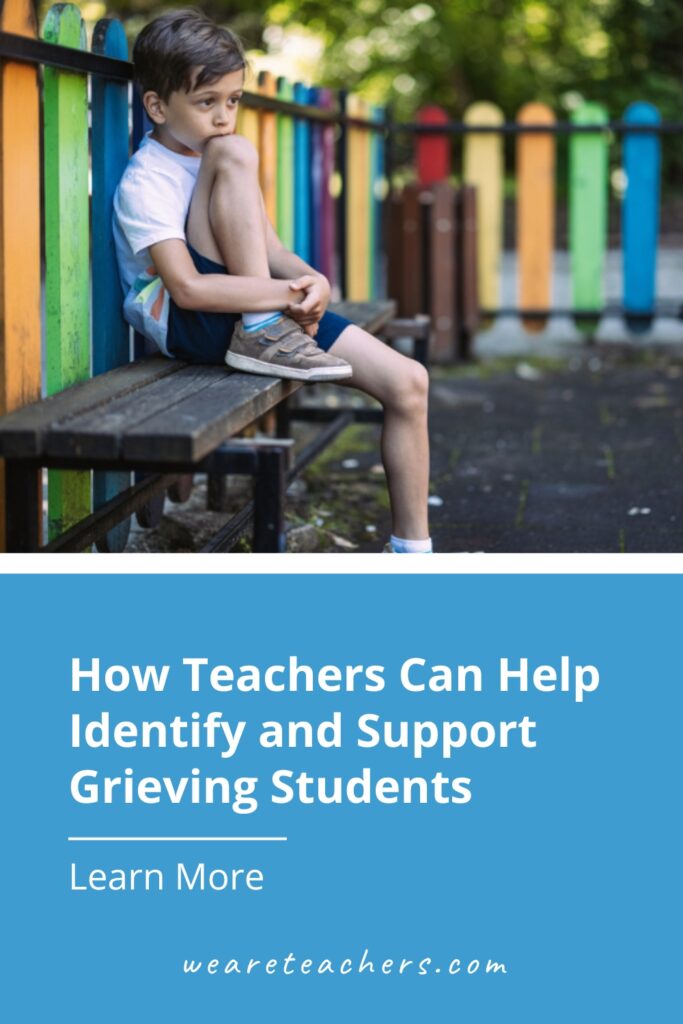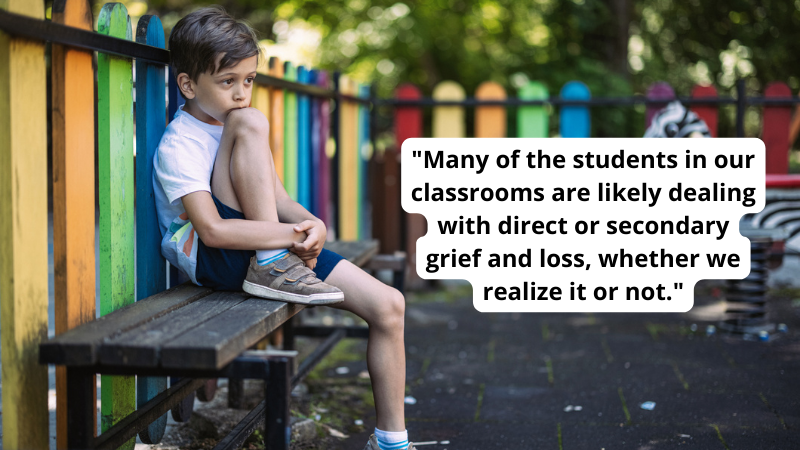May is Mental Health Awareness Month, and as of October 2021, children’s mental health has been declared a National State of Emergency. Many factors contribute to the rising rates of mental health challenges in children and adolescents, including increased isolation due to the COVID-19 pandemic, increased incidences and exposure to mass violence, legislation that threatens psychological safety including anti-LGBTQIA+ legislation, and social media pressures. The more Adverse Childhood Experiences (ACEs) a child is exposed to increases the likelihood that they will experience mental health challenges.
One particular Adverse Childhood Experience that has skyrocketed in the last several years is loss and grief. According to the Children’s Grief Awareness Day organization, “more than 72,000 children lost a parent to COVID-19 and over 67,000 lost a grandparent caregiver in the home” (2022). Furthermore, children are losing their classmates and teachers, as gun violence is now the leading cause of death for American children.
Whether we realize it or not, many of the students in our classrooms are likely dealing with direct or secondary grief and loss. They may have lost a family member, friend, or even a pet. We may know about the circumstances of the loss or we may be unaware that the student has experienced a loss. Therefore, it is important to recognize the common signs and symptoms of grief in children and adolescents in order to provide the appropriate support to your grieving students.
Common signs and symptoms of childhood grief
It is important to remember that children, especially young children, may not yet have the words to verbalize the feelings they are experiencing as they grieve. Signs and symptoms of grief may instead manifest in externalizing behaviors, internalizing behaviors, physical symptoms, or academic signs. Some examples of each of these are listed below. It is important to remember that there is no “normal” or one way to grieve, so signs and symptoms may vary.
Externalizing behaviors
- Aggression
- Inappropriate behavior
- Self-harm
- Verbal threats
Internalizing behaviors
- Withdrawal from friends or school activities
- Increased emotions of anger, sadness, fear
- Appearance of “flat” effect
- Signs of depression or anxiety
- Hyper-vigilance/heightened worry
Physical symptoms
- Headache
- Stomachache
- Trouble concentrating
- On edge or easily startled
- Changes in appetite
Academic signs
- Decrease in academic performance
- Increased absenteeism
- Decreased participation
- Changes in play/developmental regression (for young children)
- Increased hyperfocus on perfectionism
Tips on providing support to a grieving child
Note: For additional support, consult with appropriate staff trained in mental health such as school counselors, social workers, psychologists, and grief counselors.
Provide time to process
Grief does not have a timeline or boundaries. A child may experience grief symptoms immediately after a death or after a length of time (delayed grief). Children may appear “fine” at one point in the day or one week and at a different point display several signs and symptoms of grief. Therefore, it is important as teachers to be observant and aware of our students’ typical behavioral patterns and academic baseline. If we notice changes to a student’s baseline, this may be a good time to provide the student support.
Use supportive rather than punitive measures
Most importantly, it is important to avoid punitive measures for students who are grieving. Punishing students for decreased academic performance, increased absenteeism, and externalizing behaviors while grieving can further exacerbate the situation. Instead, create a “brave” space where students are invited to share their emotions, talk to you, or just sit in silence for a moment. Providing the space and time for a grieving child to sit with their grief can be incredibly powerful.
Talk about grief
In addition, discuss loss and death in developmentally appropriate terms. It can help to utilize books to stimulate these discussions (see our picks for all ages here) as children may be able to better relate to the characters and emotions in the story. It is important to be cognizant of cultural/ethnic/religious views of grief that may differ from your own. Listen to what the student/family shares, and refrain from adding your own views and opinions on death and grief. (These picture books are great to address sadness in younger children too.)
Create space for grief that affects the entire classroom/school
If there is a school-wide or classroom-wide loss, it is important to provide space and time for grief and processing. You may want to set aside a time for a class discussion or activity that can help students remember the person they lost. You will also want to have a discussion among teachers and staff to ensure that all adults are using similar language and explanations to talk about the loss, so that students can feel the safety of consistency.You can work with your school counselors, social workers, and administrators to make sure both you and your students get the necessary supports.
Grief and loss are a part of the human experience. The more we can support our students to normalize discussion and express emotions surrounding grief, the better equipped they will be to process grief when they encounter it.
Check out these resources for additional information on childhood grief:
National Alliance for Grieving Children
National Association of School Psychologists—Addressing Grief: Tips for Teachers and Administrators
National Center for School Crisis and Bereavement
National Education Association: Grief and Loss Resources for Educators and Students
Scholastic—Children and Grief: Guidance and Support Resources
Speaking Grief: Childhood Bereavement Resources
64 Children’s Books About Death and Grief from What’s Your Grief?
For more articles like this, be sure to subscribe to our newsletters.


